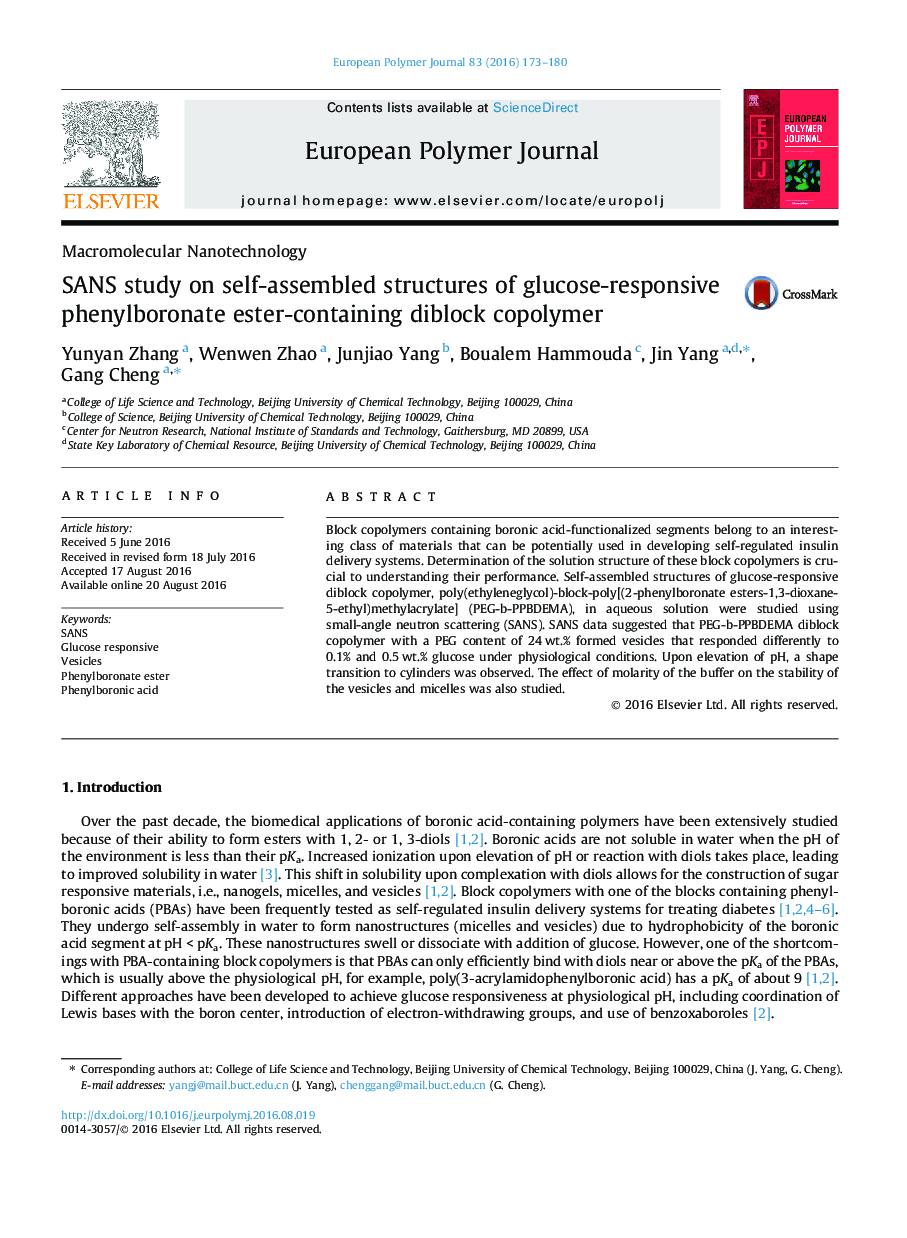| Article ID | Journal | Published Year | Pages | File Type |
|---|---|---|---|---|
| 1401196 | European Polymer Journal | 2016 | 8 Pages |
•Phenylboronate ester-containing diblock copolymer formed vesicles in PBS buffer.•Vesicles responded differently to 1 and 5 mg/ml glucose.•A shape transition observed in 5 mg/ml glucose solution.•Vesicles dissociated and expanded in 0.15 M PBS buffer.
Block copolymers containing boronic acid-functionalized segments belong to an interesting class of materials that can be potentially used in developing self-regulated insulin delivery systems. Determination of the solution structure of these block copolymers is crucial to understanding their performance. Self-assembled structures of glucose-responsive diblock copolymer, poly(ethyleneglycol)-block-poly[(2-phenylboronate esters-1,3-dioxane-5-ethyl)methylacrylate] (PEG-b-PPBDEMA), in aqueous solution were studied using small-angle neutron scattering (SANS). SANS data suggested that PEG-b-PPBDEMA diblock copolymer with a PEG content of 24 wt.% formed vesicles that responded differently to 0.1% and 0.5 wt.% glucose under physiological conditions. Upon elevation of pH, a shape transition to cylinders was observed. The effect of molarity of the buffer on the stability of the vesicles and micelles was also studied.
Graphical AbstractFigure optionsDownload full-size imageDownload as PowerPoint slide
